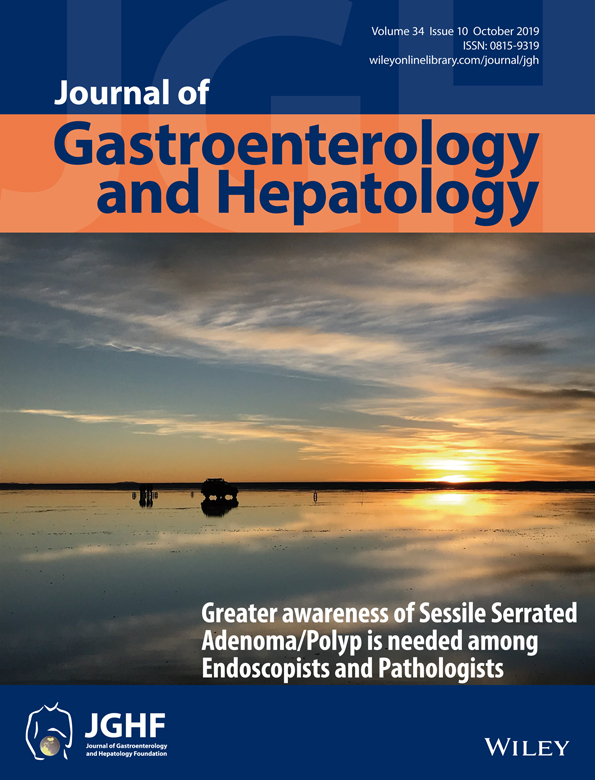Urinary abnormalities in children and adolescents with Wilson disease before and during treatment with d-penicillamine
Abstract
Background and Aim
Renal abnormalities can occur at any time point during the course of Wilson disease (WD). We aimed to fill a literature gap in this respect by studying urinary abnormalities in children and adolescents with WD.
Methods
This study included 60 children with WD presenting to the Pediatric Hepatology Unit, Cairo University. The following data were retrieved from the patients' files including age, sex, liver function tests, serum ceruloplasmin, 24-h urinary copper, serum creatinine, blood urea nitrogen, urinalysis, urinary albumin/creatinine ratio, urinary calcium/creatinine ratio, urinary β2-microglobulin, liver and renal biopsy results when available.
Results
All studied cases had no symptoms related to renal involvement. Microscopic hematuria was detected in 11% and 12% at baseline and within 5 years of therapy, respectively. Moderate microalbuminuria was detected in 34%, 50%, and 33% at baseline, within 5 years and > 5 years after therapy, respectively. Hypercalciuria was detected in 23% at baseline, 34% in those patients treated for up to 5 years and 37.5% > 5 years of therapy. Age and international normalized ratio were significantly higher in patients with high calcium/creatinine ratio compared with those with normal values at initial evaluation. Frequency of elevated urinary β2-microglobulin was 36%, 36%, and 37% in patients at baseline, up to 5 years and > 5 years of therapy, respectively.
Conclusion
Asymptomatic urinary abnormalities are present in patients with WD at any time point of the disease and during treatment with d-penicillamine. They have to be searched for, as early intervention may prevent progression to renal insufficiency.




